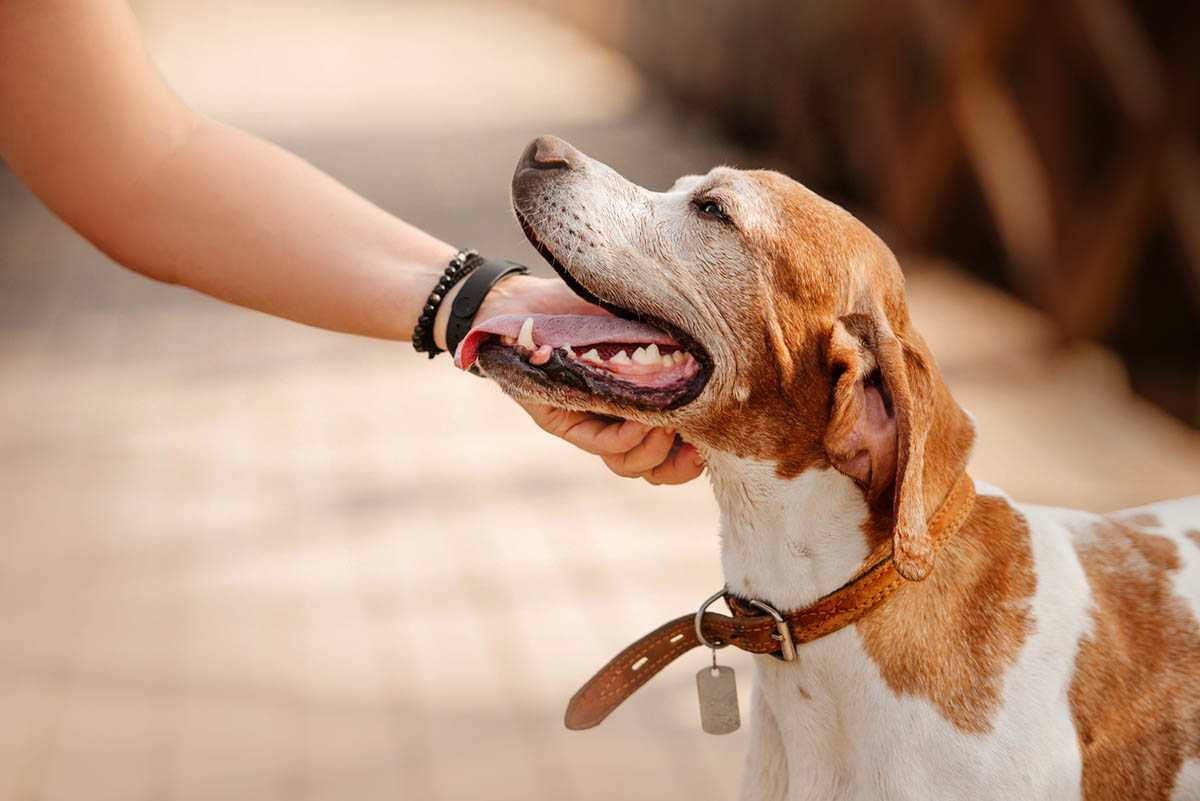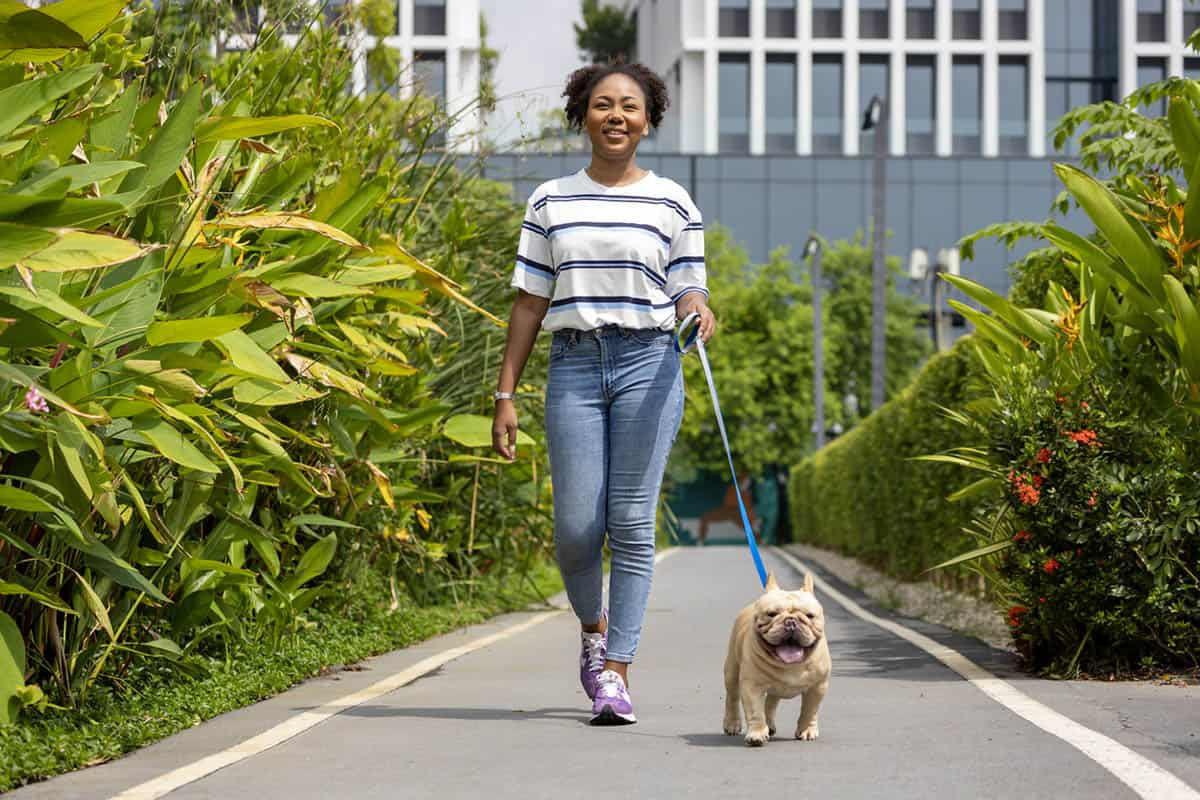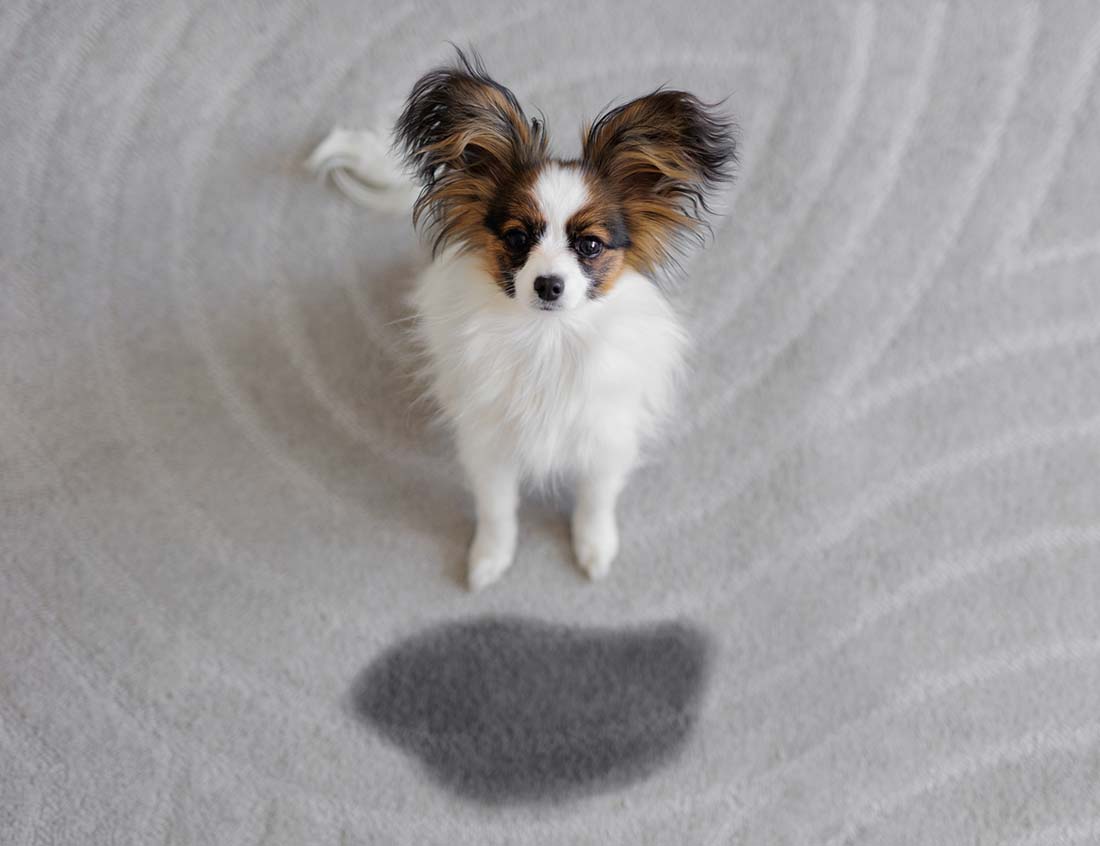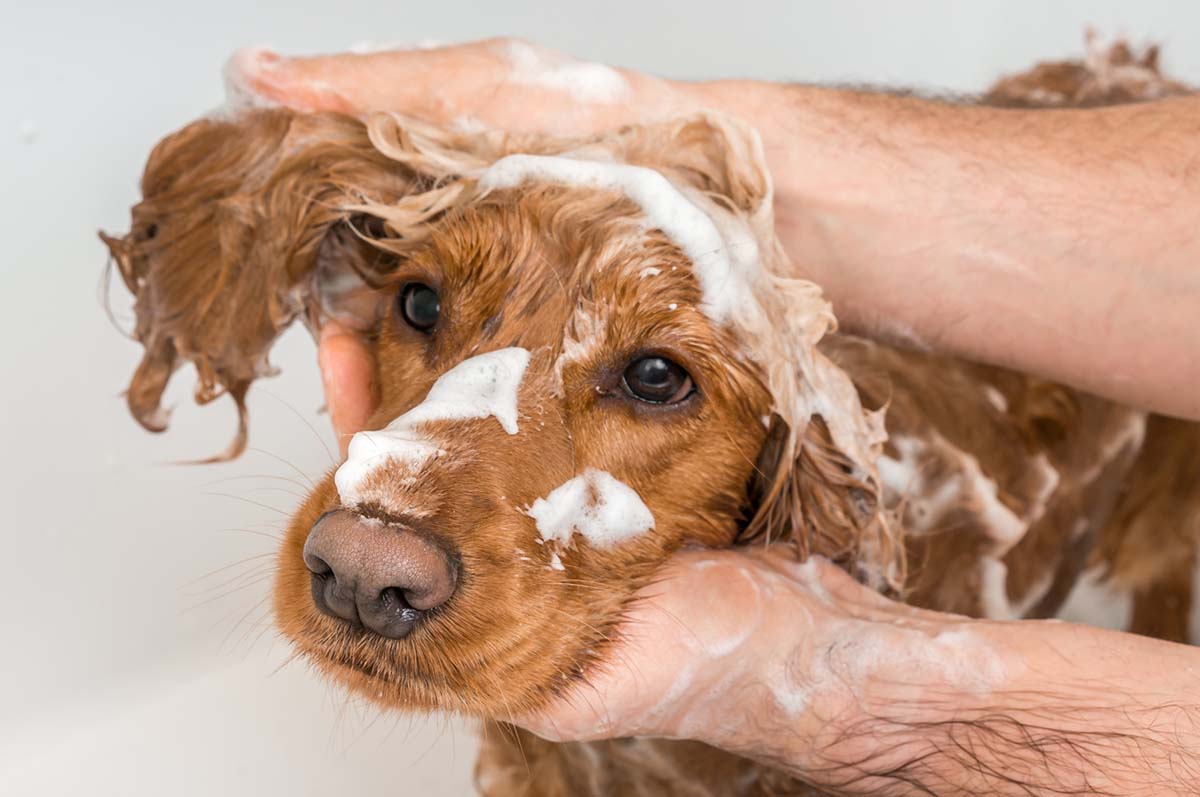How to Pet a Dog the Right Way
Yes, there IS a right way to pet a dog. Learning how to appropriately pet a dog starts with learning how to interpret a dog's body language.
Like most loving pet parents, you love petting your own dog and probably love meeting other dogs. There’s good reason to love petting dogs since research shows that interacting with a dog stimulates your brain!
That’s why it’s natural to want to reach out and pet even an unfamiliar dog. But it’s important to understand a dog’s body language in order to know if the dog feels like being petted. After all, some shy dogs feel anxious with attention from a stranger.
It’s also important to remember that what your dog likes isn’t necessarily what every dog likes when it comes to petting. So, let’s discuss a little bit about dog behavior and body language. We’ll address how to pet a dog the right way (yes, there is a right way) and what you shouldn’t do when meeting a new dog for the first time.
Why Should You Know How to Pet a Dog?
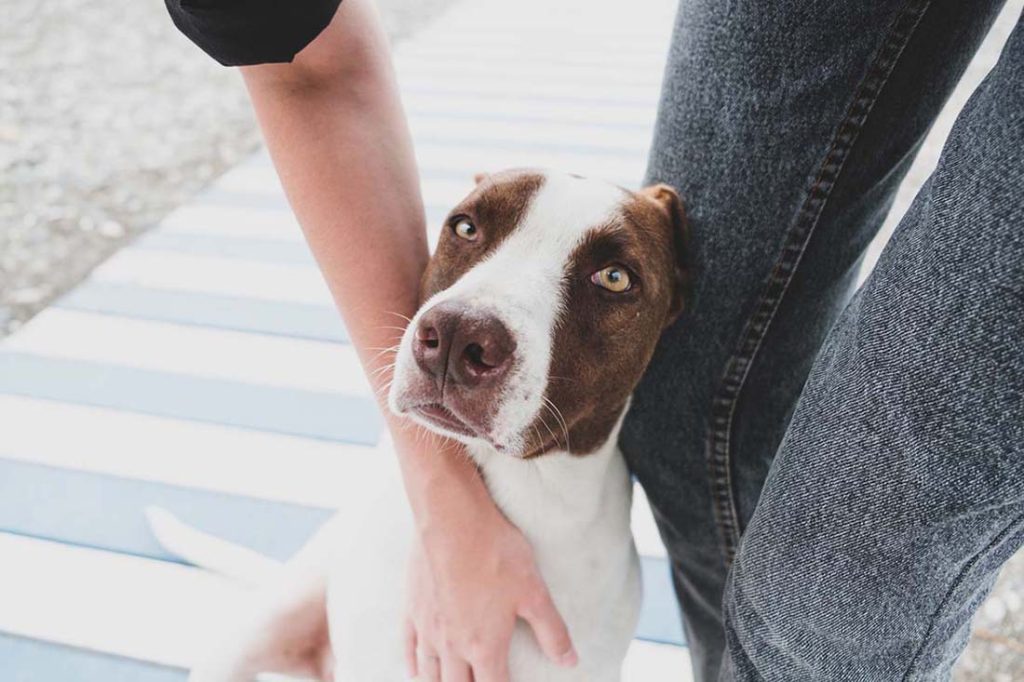
You might think that petting a dog is a straightforward process, one that gives you plenty of tail wags in return for your attention. But there’s more to it than that. Not all dogs appreciate petting, particularly when they don’t know you.
There is actually an appropriate way to approach a new dog, and it requires paying attention to signals coming from the dog. The dog will indicate if they are stressed or experiencing discomfort. This is also important to be aware of when petting familiar dogs since they might be having a bad day.
You love your own best friend, and you use petting to show him plenty of love and affection, but even your own doggy won’t find petting pleasant under some circumstances. That’s why you need to understand a little bit about a dog’s body language and be respectful of any signs of discomfort that might indicate you should back off for a while.
It’s particularly important that you watch for signs of aggression from an unfamiliar dog that shows they are not a particularly friendly dog or perhaps they’re just not in the mood at the moment.
It’s also vital that you pass this kind of information on to children so that they understand how, and where to pet dogs and when they should wait to interact with their furry friends.
What Do You Need to Know About the Dog/Human Relationship?

Research into how ancestral wolves evolved into domesticated dogs demonstrates the strength of the dog/human bond. The bond was first formed as the result of a kind of mutualism in which wolves following and scavenging nomadic hunter-gatherer camps alerted the humans to other potentially dangerous intruders (human or animal).
Humans used that and the ability of the wolves to track prey to their advantage. Soon, they began exercising control over the breeding of wolves to make them less dangerous and more controllable. That eventually produced domesticated dogs.
During the next phase of dog evolution, humans began to exercise even more control over the breeding tendencies of their canine friends to develop distinct dog breeds. One of the things that made this easier and strengthened the dog/human bond was that both humans and dogs process social information and body postures in very similar ways.
This is why dogs can perceive certain information from your face and your body language, and it’s also why you use their body language and facial expressions to understand their emotions. So, what are they saying?
What Does a Dog’s Body Language Indicate about His Emotions?
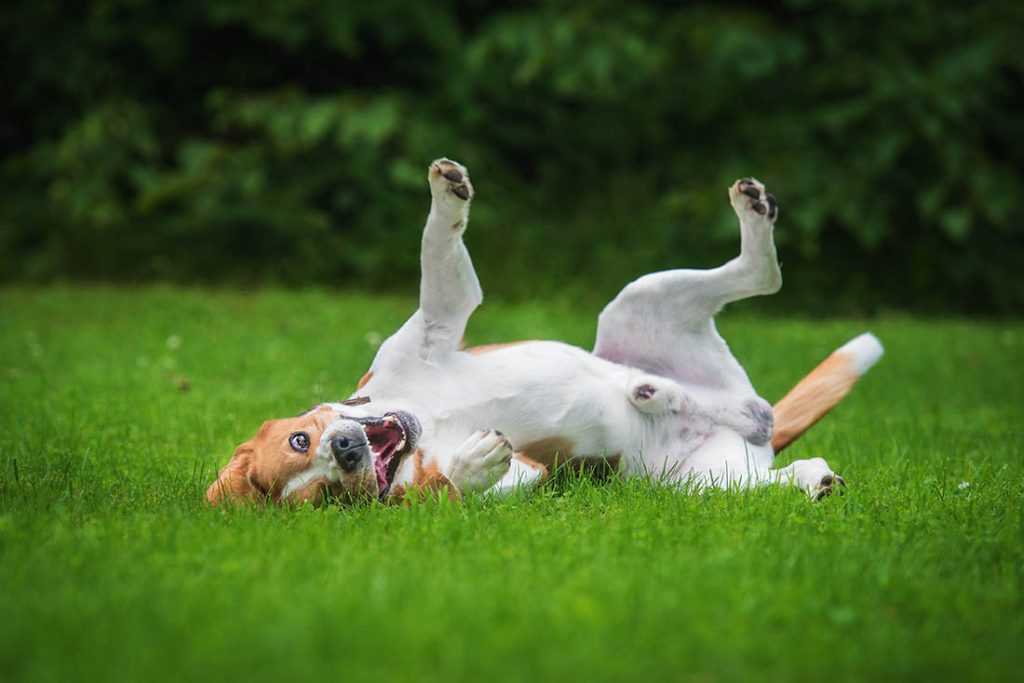
For dog-to-dog and dog-to-human communication, body language is everything. Let’s take a look at some of the common indicators of emotions that you should be aware of in your dog.
Tail-Wagging
This is one of the most obvious body signals, and it’s also one of the most commonly misinterpreted by humans. Tail-wagging simply indicates that a dog is aroused, but you have to look a little deeper to understand just how he is aroused.
It’s actually the speed and direction of the wag in combination with the position of the tail that indicates whether the dog feels happiness, excitement, frustration, or aggression. In simple terms, the faster the tail wags, the more aroused the dog.
You’ve seen those slow, side-to-side wags that move the whole body, right? That indicates your dog is relaxed. A fast, stiff, twitchy wag indicates more arousal and could mean aggression, as seen in guard dogs.
Research also shows that the direction of the wag is important too. If your dog’s tail is wagging to the right, that indicates a more positive emotion, while left means negative. The helicopter tail wag where the dog’s tail goes in circles is unquestionably happiness, and that’s probably what you see when you’re being greeted by your dog.
Finally, the position of the tail relative to the ground is important as well. The higher the tail, the more assertive the dog is being. A lowered tail, or one tucked between the legs, indicates fear or stress. A tail held high, like a flag, indicates confidence and perhaps even aggression, while a relaxed dog holds their tail in a more neutral position, although that sometimes depends on the breed.
Raised Hackles
This definitely indicates arousal, though not always in a negative way. Your dog might simply be intensely interested in something, though it can mean aggression. Sometimes, it’s also involuntary in a way similar to goosebumps in people.
Cowering
Dogs that cower, hunched to the ground, are indicating fear or stress. They are trying to make themselves look smaller to show that they mean no harm. This sometimes results in them turning over on their back, which you might interpret as soliciting a belly rub, and it can be if your dog is relaxed. In other cases, however, it’s a submissive gesture that may be accompanied by urination.
Weight Shifted Forward
This is an indication of interest, but it can also be an offensive or aggressive gesture. If it’s combined with a twitchy tail wag, it’s likely aggressive as the dog is attempting to look larger and more threatening.
The Play Bow
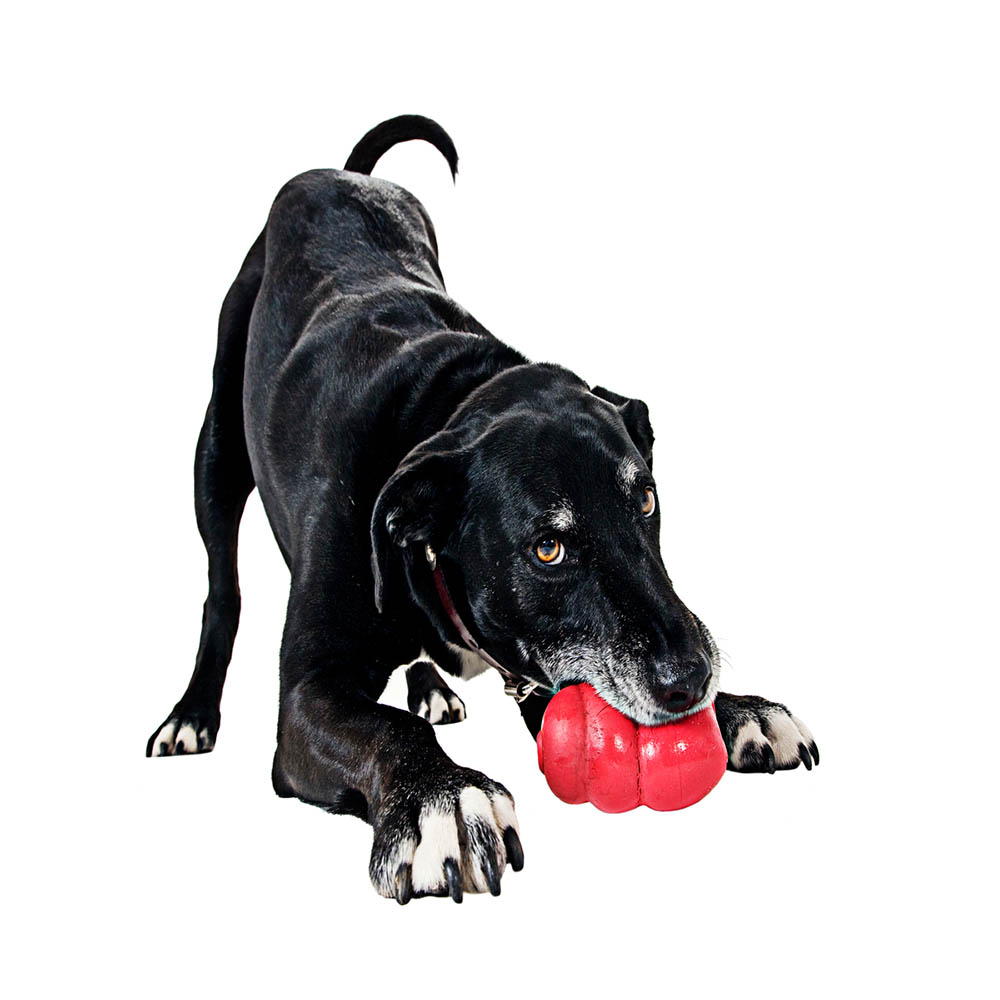
This is an easy dog body language gesture to interpret. It’s the one where the dog puts his chest to the ground and his rump in the air. Pups do this to initiate play with other dogs and people.
The Paw Raise
This is another frequently misunderstood signal. In pointers, like the English Setter, it indicates nearby prey, but outside of that, it typically indicates uncertainty and even insecurity.
Facial Movements: Yawning, Lip-Licking, and More
While your dog might appear to have similar facial expressions to yours, he’s not using them in the same way. For example, you yawn when you’re tired or bored, but when a dog yawns, he’s feeling stressed. It’s one way to calm themselves down.
Lip-licking is another commonly misinterpreted signal in dog body language. Dogs will lick their lips after eating a meal they liked, but they also do it when they feel anxious. Sometimes, we humans like to think that means the dog wants to lick our face, but it’s actually a sign of discomfort.
Perhaps the most confusing dog body language signal is smiling. It looks so cute, but it can actually be a warning. Your dog may be showing off his impressive weapons—his teeth. This is particularly true when it’s accompanied by growling, and the corners of his lips form a C-shape with the front teeth and canines fully displayed.
Sometimes, however, smiling is a submissive gesture, also known as the submissive grin. With this type of smile, your dog’ usually only shows his front teeth, not the canines. He will also typically have a loose, wiggly body posture.
Eye Contact
Finally, there are your dog’s eyes that can indicate his emotions and intentions. Soft eyes, which have relaxed lids and can appear like squinting, indicate happiness or calmness.
Hard eyes that seem very cold indicate a negative state of mind. You often see this when your dog is intently staring at something for a long time. That’s typically a threat.
Eye contact is another way dogs can show intent and emotions. A hard stare is often an indicator of aggression, whereas looking away signals submission. Stressed dogs avoid eye contact, while happy, calm dogs often squint at the object of their affection.
Finally, the whites of the eyes are another emotional signal. When you see the whites of the eyes, something known as whale-eye, that means your dog is feeling stressed. When you pet your dog on the head, you might see this indicator of discomfort.
It’s important to remember that these signals of dog body language don’t happen in a vacuum, and understanding them is an important part of predicting a dog’s behavior. To really know what your dog is saying, you have to look at the entire package.
You want to do that whenever you approach a new dog and try to pet it, but you also want to be aware of it when you introduce a new dog to your home and when interacting with your best friend since you don’t want him to be uncomfortable either.
How Should You Interact with New Dogs?
The first thing to think about when approaching a new dog is that the dog doesn’t know your intentions, so you want to be respectful and do your best to show him you mean no harm. Of course, you should ask permission from the dog’s owner before attempting to pet him. The dog owner might know of certain behavioral problems, or they might be stressed themselves.
It’s tempting to reach out and pet service dogs, for example, but they’re actually working. So, you need to check before reaching out to say hi.
Once you’re given permission to pet, here are a few things to do so that the dog feels comfortable and welcomes your attention.
1. Approach Slowly and Get Down
Let the dog approach you. Present yourself to the dog in a nonthreatening posture. That means getting down to his level and presenting your side to him rather than facing him straight on. Then, see if he comes to you. If he doesn’t, approach him slowly and wait for him to initiate contact.
2. Take Your Time
Getting to know someone takes a little time. The same is true for an unfamiliar dog. He doesn’t know your body movements and gestures like your own dog does, so take a little time to introduce yourself. If the dog seems relaxed and comfortable, pet them for a few seconds, but don’t make any sudden movements.
3. Don’t Reach Over a Dog’s Head
That’s the first thing many people do when interacting with an unfamiliar dog. They reach down and try to pet them on the top of their head. This is an intimidating gesture that can easily make the dog uncomfortable, especially when you’re meeting him for the first time. Instead, present the back of your hand under his chin for him to smell. Dogs learn about the world at large through their sense of smell, so letting a dog sniff you is a way for him to get to know you.
4. Avoid Direct Eye Contact
Direct eye contact is a challenge to a dog, just like it is for most other animals, so don’t do it. You can glance at him but then look away. If you see his tail wagging loosely, that likely means he’s curious and wants to interact.
5. Watch the Dog’s Reactions
This is where the body language we discussed earlier comes in handy. Watch the signals the dog is giving you. If he seems uncomfortable or disinterested, don’t push it. If, on the other hand, he moves closer and solicits interaction, then you can dole out the love.
6. Use Your Petting Manners
The speed and intensity of your petting can be crucial for meeting new dogs. As mentioned, never go for the top of the dog’s head, but don’t rub his coat in the opposite direction of his fur or make sudden moves. That can make him feel threatened.
Instead, begin by petting him gently and slowly on his chest, under his chin, or in other areas he considers neutral.
If the dog rolls over, remember that can mean discomfort and submission, so let him know you’re not a threat with gentle petting and a calm, reassuring voice. Should his body language indicate the dog feels more comfortable, you might gently rub his belly and watch his reaction. If he seems to enjoy the belly rub, you can carry on.
Where are the Best Petting Spots?
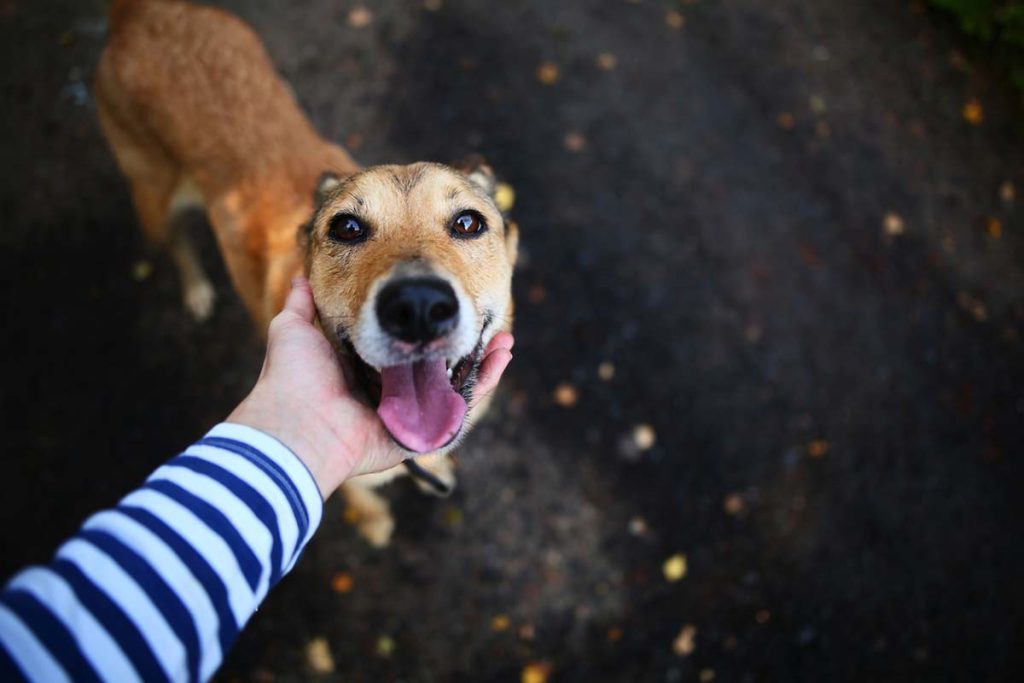
Of course, dogs are individuals, too, so it can vary, but in general, there are some neutral areas that don’t feel threatening since they’re not particularly vulnerable. Here are a few neutral spots dogs are OK with being pet:
- Under the chin
- Base of the neck
- Shoulders
- Legs
- Sides of the body
What are the Petting Spots to Avoid?
There are certain places on dogs that are particularly vulnerable spots, and they usually don’t like being petted there when first meeting someone. These include the following:
- Tail
- Top of the head
- Ears
- Paws
- Muzzle
Additionally, there are some sensitive areas that dogs may like being petted on, but not until they know you better. The belly, for example, is an area that many dogs like rubbed, but they have to be comfortable with you first.
The base of the tail is another area that many dogs like to be scratched, but it can also amp them up. Always start out gently and watch the dog’s reaction. If they seem to be getting too excited, then move to another area.
Why Should You Pet a Dog?
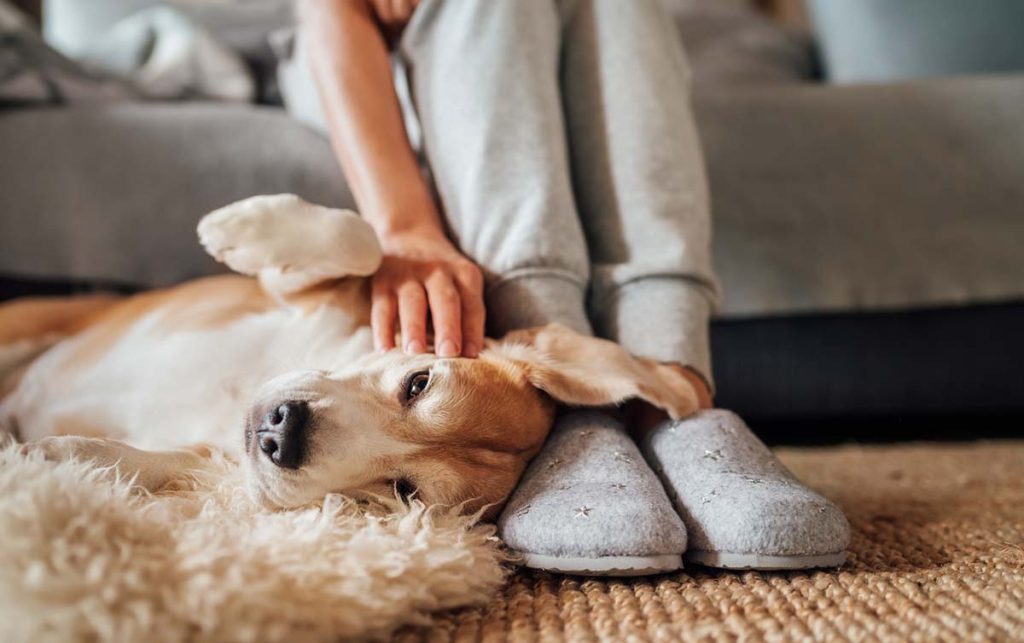
For dog lovers, petting is a way to show affection to their furry friends. It does help to build the relationship we have with our four-legged buddies. Research shows that it gives both you and your best friend a shot of oxytocin, the hormone linked to positive emotional states and bonding.
In fact, petting dogs can reduce stress and improve your overall health. As for the dog, petting can also reduce his stress, particularly before you separate from him.
In sum, petting a dog is good for both you and the dog, but do dogs like to be pet all the time?
The answer to that is, of course, no. There are times when your four-legged friend is trying to tell you that he’s not comfortable with that, and that’s why it’s important to understand a dog’s reaction to your intentions.
In Sum, Take It Slow When You Say Hello
The basics of how to pet a dog the correct way are to take it slow and pay attention to body language signals. If you take the time to learn a little about what a dog is saying to you, you’ll form much more fulfilling relationships with your canine friends.
